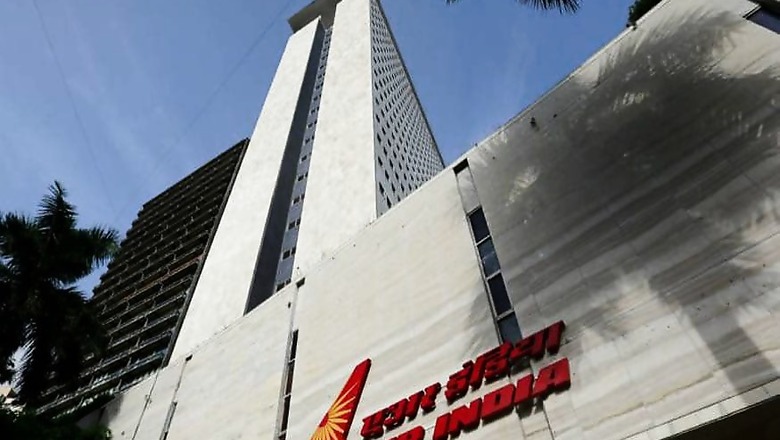
views
As the ministry prepares to release the expression of interest (EOI) document for Air India, the airline finds itself in a challenging position. There has not been much improvement in the tepid investor interest that forced a reconsideration and revision of the terms of sale. Last year saw repeated proclamations on Air India disinvestment and on the quality of the asset. But with any acquisition what the buyer wants is future claims on cash-flow on future claims on traffic. In the current scenario, neither is materialising.
Several questions have been raised, including why turning around the airline is not being considered by the government. As the numbers indicate, this is simply not an option. A restructuring effort requires cash and large amounts of it.
Restructuring Requires Large Amount of Cash
A standalone restructuring of the airline will necessarily consume cash. To give an idea of just how much, balance sheet restructuring at this point will require anywhere between 10,000 and 14,000 crore annually. This does not include the additional investment in fleet, product and network estimated conservatively at about Rs 700 crore. Alongside this investment, to compete, Air India will further need to cut its costs by Rs 10,000 crore. Again, annually.
And if the numbers weren’t challenging enough, the airline requires motivation, management and cessation of control, which has simply not happened. Without all three, and without all three granted together, items such as fleet restructuring, contract renegotiations and cost reduction are simply not addressable.
In terms of optics, a restructuring at this point will essentially indicate that the government failed to privatise the entity. Going by political atmosphere, it will be yet another point that is taken up and amplified tenfold. Which also begs the question: why are announcements being made in the first place?
Macro-Economic Headwinds Likely to Cause Turbulence
If the restructuring was not challenging enough, it does not help that this comes as there is a slowdown in growth. Consumption is on the decline, the rupee has depreciated at a compound annual rate of five per cent over the last decade and the government is staring at a gross fiscal deficit as tax revenues are unable to cover planned expenditures.
With Air India’s exposure to international markets, geopolitical dynamics impact it more so than any other Indian airline. Whether it is the declining demand for Europe, the situation in the Middle-East or the intense competition for traffic bound across the NorthAtlantic, risk mitigation involves revenue and cost measures that have just not been taken.
Against this backdrop, Air India continues to bleed with the civil aviation minister Hardeep Singh Puri himself indicating that losses are in the range of 20-26 crore rupees a day. Any restructuring will essentially have to fund these losses as routes are rationalized and the assets evaluated. And losses of this magnitude can add up very quickly. To highlight how precarious the situation is, 100 days of losses by the current airlines are enough to capitalize a new airline. As such the situation is untenable.
Turnaround Requires Time
Ironically, Air India is positioned in fastest growing aviation market globally and has a well-defined traffic niche. And it is a market where foreign carriers are eager to gain entry. Both because of the potential and also as the other large markets like China, Iran and USA are closed out by protectionist measures.
With a 13 per cent domestic market share and a 19 per cent international market share, Air India has a valuable slot and traffic rights portfolio and institutional expertise gained over decades. Add to that membership in the Star Alliance. Yet, it has failed to leverage these advantages and has reached a stage where a turnaround is a very expensive proposition.
Lessons from other privatisations around the world could be used. For instance, when the British Airways was privatised in 1987, the then UK government reconstituted the board with individuals who were actively involved. An experienced turnaround specialist was hired and given substantial authority; length of services was eliminated as being a key determinant; the airlines was rapidly downsized and investment in product was undertaken.
Similarly, the Lufthansa privatisation included a 10-year preparation. The government stake was gradually reduced from 51.4% to 25% and staff, pensions and divisions were rationalised. Again, an impactful leader who was not averse to taking drastic actions was appointed. A freeze on wages and productivity imposed. And investment in product was undertaken. Similar scenarios are seen across other privatisations.
In Air India’s case, alarm bells should have been sounded after the failure to attract bidders in the first round. This did not happen. Instead, there were new route announcements and arguments that “buyers must see beyond the balance sheet.” While actions like the debt reduction and sale of non-core asset are certainly welcome, the debt as it stands is too large to attract potential buyers. Say nothing of the contingent liabilities and the parties lined up to file Public Interest Litigations (PILs) which will most certainly delay the integration or rationalization of the asset.
Similarly, while analysing past mistakes and fixing accountability is certainly warranted by the government, it does nothing for the investors because financial investors look for future claims on cash-flow, while strategic investors will look for future claims on traffic. In the present scenario, neither is available.
With the government’s efforts focused on privatisation, it is hoped that a buyer with patient capital and the wherewithal to see the acquisition through and perhaps even restore the airline to its lost glory happens soon. Because for the government, turning around Air India is a very expensive proposition.
(The author led the advisory and research teams at Centre for Aviation (CAPA). Views expressed are personal.)















Comments
0 comment